A deep dive into the Nintendo Switch (OLED model)
Reading time: 5 minutesIt’s not the Switch Pro we expected, but it’s pro(ish)
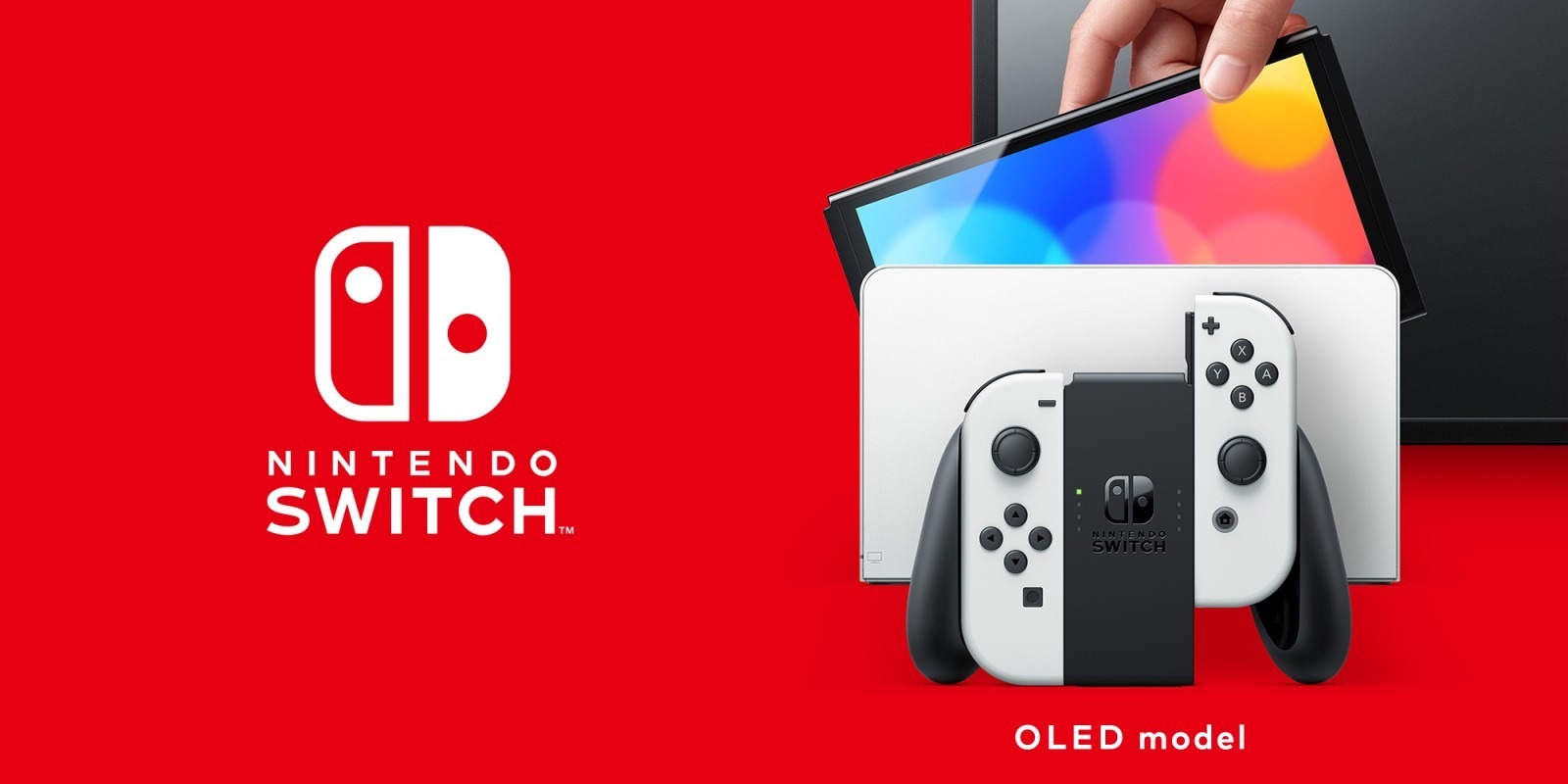
It turns out the fabled “Switch Pro” was real after all! …Kinda. Nintendo’s new, catchily-named Nintendo Switch (OLED model) is launching on 8th October, and is set to bring a whole heap of upgrades to the party, including a larger, brighter screen, more storage, and a way better kickstand.
But there’s no 4K, Ultra-HD, super-duper-whizzy high-refresh-rate gubbins, no new design for the Joy-Cons, and no performance boost.
So, who exactly is this for? Should we be looking at this as an “upgrade”, or is it better suited to the last few holdouts who still haven’t bought a Switch? Let’s pick apart everything we know about the new model, and see if we can’t figure it out.
It’s bigger and heavier, but not by much
At 102 × 242 × 13.9mm with the Joy-Cons attached, the OLED model is just a smidge taller than its daddy (239mm tall), although both models are the exact same thickness (28.4mm). The OLED Switch is slightly heavier too, at 420g with the Joy-Cons attached, vs. 398g for the OG Switch. That 22g difference is roughly the weight of 12 playing cards (that’s seriously the best comparison I could come up with), so it shouldn’t put too much extra strain on the ol’ wrists.
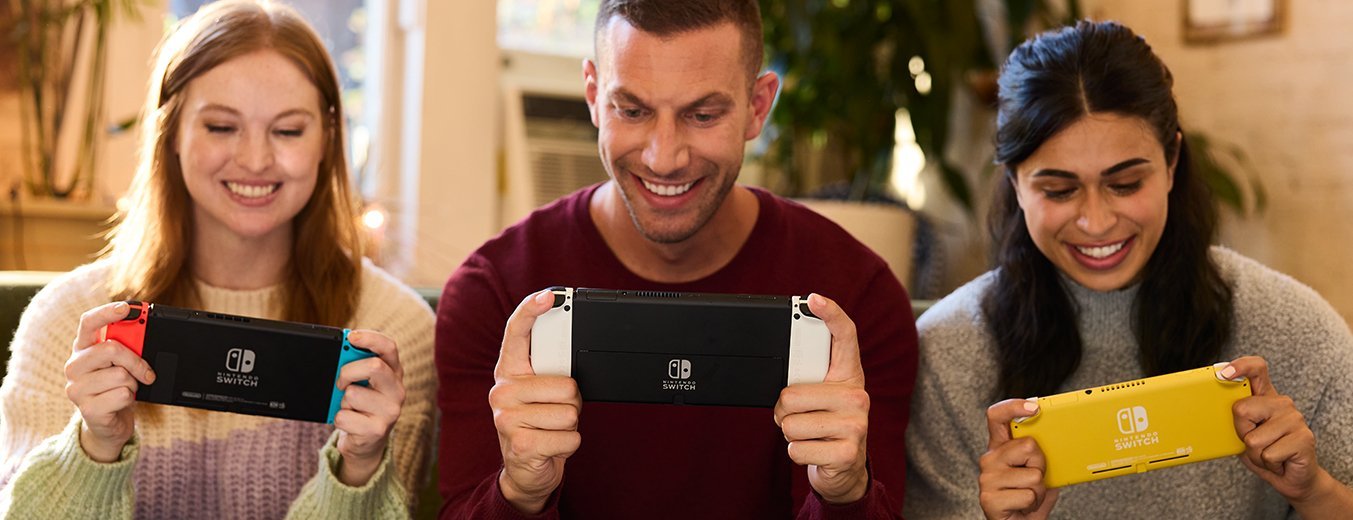
Compared to the Switch Lite (275g), you’re looking at about a baseball’s worth of extra weight.
The screen is bigger and (probably) better, but not higher-resolution
The new slimmer bezels mean the OLED model’s screen is about 13% larger than the one on the current Switch. And the OLED technology should mean it’s brighter, crisper, and more colourful, with better contrast and blacker blacks.
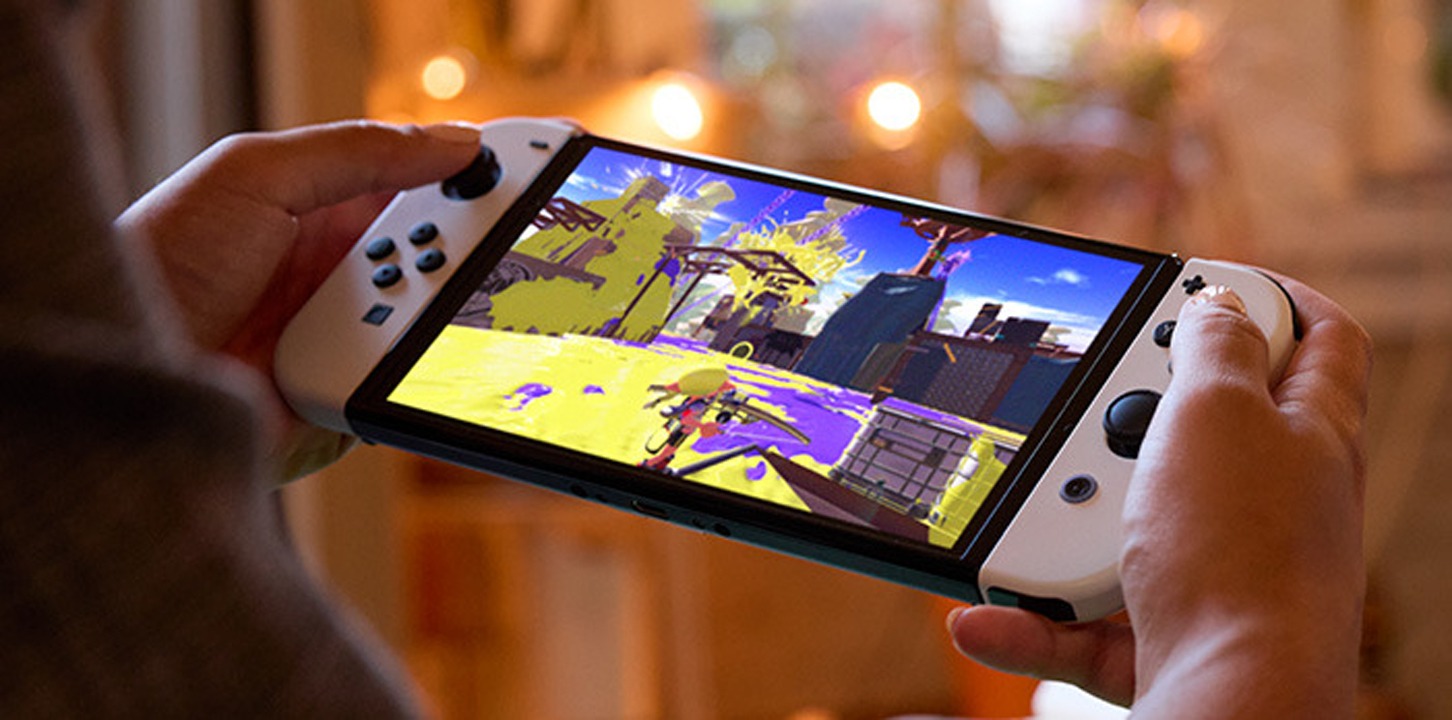
Two caveats, though.
One: It’s still a 720p display. Like the 3DS XL before it, and the DSi XL before that, you should be expecting to see every pixel. A “Retina Display”, this is not.
And two: There are good OLED display panels, and there are bad OLED display panels. We’d better hope Nintendo has shelled out for some good-quality screens. Otherwise we can expect to see issues like “blue shift” (a distracting blue tint that appears when you’re looking at the screen off-axis), “black crush” (whereby dark colours appear black, rendering some details invisible in dark scenes), and “black smear” (where brightly-coloured moving objects appear to leave behind “trails” on black backgrounds).
There’s always burn-in to consider, too: unless Nintendo has done some special software wizardry (the OLED iPhones dynamically dim specific pixels after they’ve been lit for a long time), the HUD from our favourite games might end up being the HUD for, um, all our games.

Speaking of which, the TV output is still capped at 1080p and 60fps, but you can mix and match Docks if you want ~Switch Multiroom~
Although the long-rumoured 4K output didn’t happen this time, Nintendo says you can use the OLED Switch in an original Switch’s Dock, and vice versa. The original Switch can even make use of the ethernet port in the new Dock! So anyone who upgrades will be able to use their Switches on multiple TVs. Which is neat.
The OLED and LCD Switches can also share Joy-Cons, which is great, terrible news
Same form factor, same old Joy-Cons. The good news is, if you upgrade, your existing £70 Joy-Con pairs will be able to join you. The bad news is, Nintendo says the Joy-Con controllers included with Nintendo Switch (OLED model) are “the same as the controllers currently available”, which almost certainly means they’ll still drift.
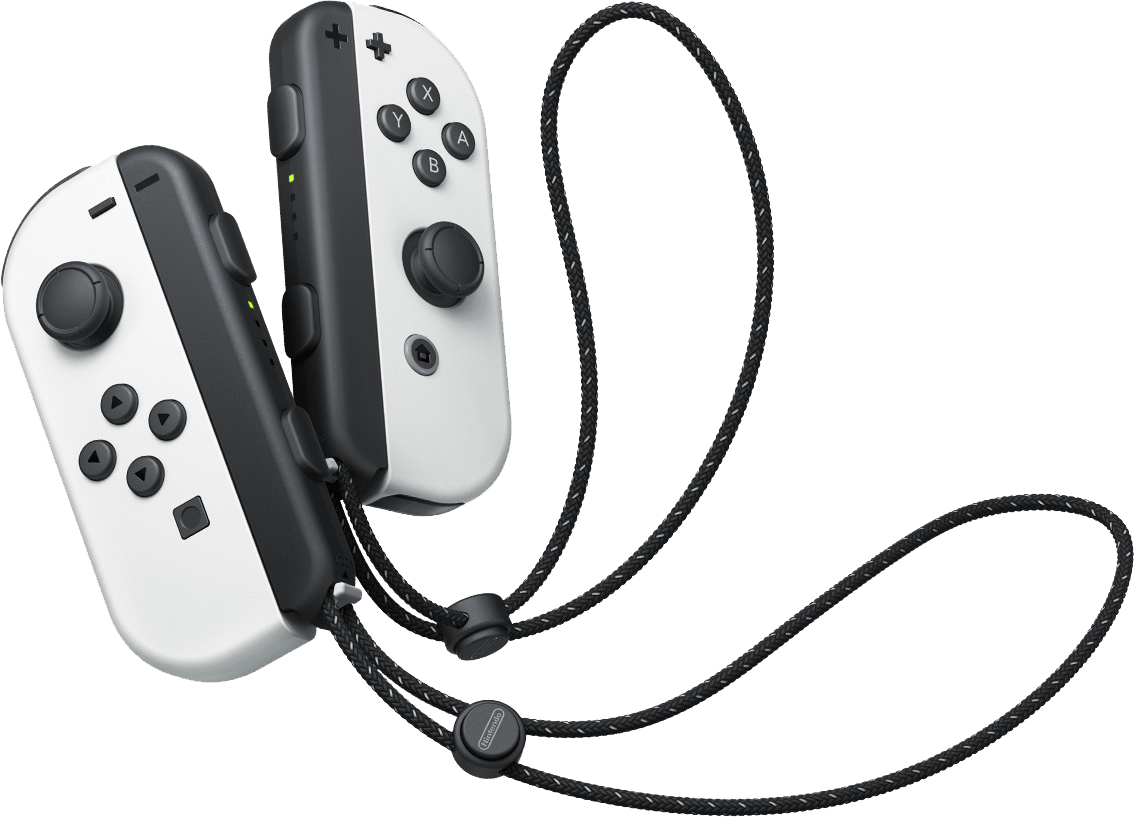
Most other accessories will work on both systems, too, although Nintendo points out that the subtle differences might cause some issues with the Nintendo Labo Toy-Cons (I imagine the Toy-Con VR Kit might be particularly badly affected).
…And it’s the same old, sucky game-sharing
The process of Playing One’s Games Across Multiple Consoles flat sucks on Nintendo Switch.
Whichever console isn’t your “primary” Switch has to be online to load any games. Two people can’t play the same digitally-downloaded game at the same time on two consoles, and you can’t run two different games on the same Nintendo Account at the same time. Heck, the “secondary” Switch won’t even let you launch a digital game purchased by one of the console’s other users.
And don’t get me started on how much of a ball-ache Save Data Cloud is on Switch. Hmph.
The new kickstand alone almost makes this a worthwhile upgrade
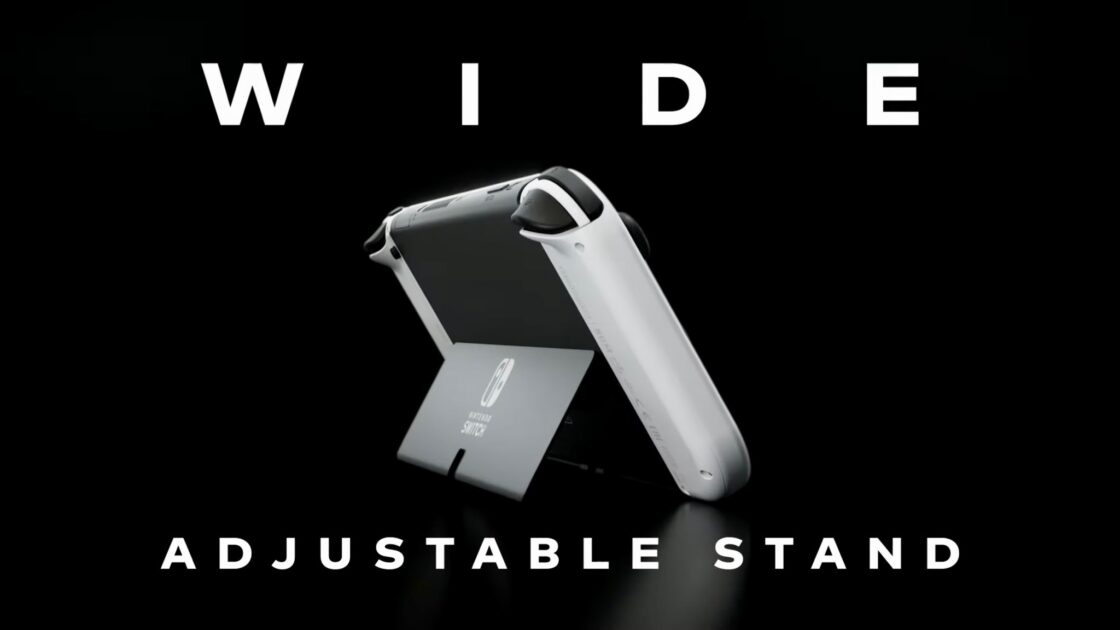
No more CNET videos of someone pointlessly flinging a Switch around! I’m particularly taken with this new Microsoft Surface-style adjustable kickstand which, combined with the larger screen, ought to make Tabletop Mode a lot more bearable. Especially on, say, a bumpy train journey or an uneven picnic table.
Double the storage, but not double the battery life
The Switch OLED model has 64 GB of built-in flash storage, compared to just 32 GB on the original Switch and Switch Lite. That’s great, because even with a 120 GB Micro SD card (and relatively small file sizes for Switch games), I still end up archiving games to make space whenever I want to install something new.
The battery is the same 4,310 mAh affair as the one in the current Switch Model, and Nintendo is still promising the same 4.5–9 hour battery life. Charging time is still a hefty 3 hours, too.
And then there’s… everything else
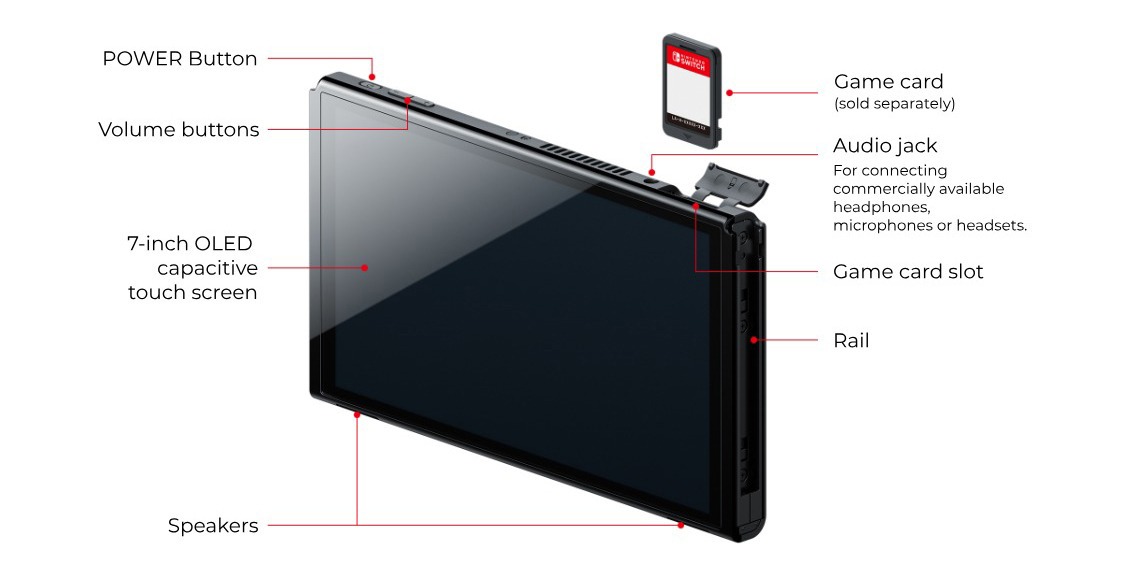
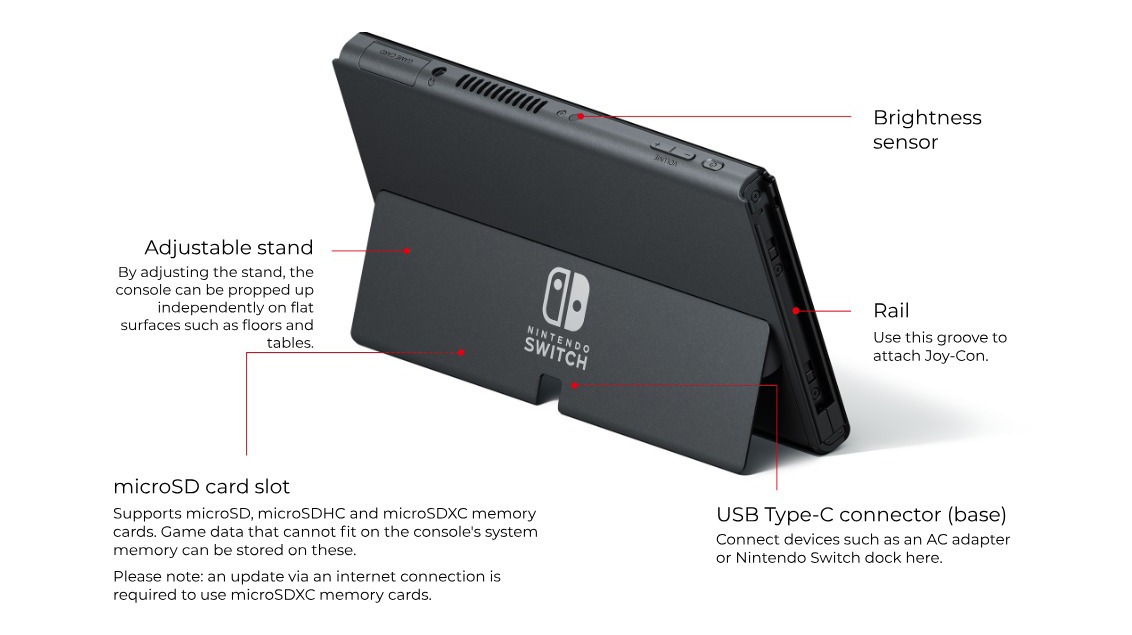
The Switch (OLED model) is out on October 8th, and will retail for £309.99 ($350) – that’s only £30 more than the original Switch. It’ll be available in white (pictured throughout this article) or the Switch’s traditional Neon red/Neon blue colour combination.
Essentially, this is the same, four-year-old Switch we know and love, just with a few welcome upgrades and modernisations. And… that’s kind of left me feeling torn. Speaking as someone who’s owned a DS, DS Lite, DSi, DSi XL, 3DS, 3DS XL, New 3DS, New 3DS XL, 2DS, Switch, and Switch Lite – I’m no stranger to falling in love with Nintendo’s endless upgrades.
And yet, I can’t see any pressing need to get an OLED Switch. For first-time Switch buyers, this is going to be a no-brainer, but I just don’t think it’s got that “wow” feature that’ll make me feel like I’m missing out on something. Throw in 4K, or higher frame rates, or a 1080p screen, or just… anything novel, and I will be all over that shit.
But this is… kinda just a heavier, brighter Switch with a better kickstand.
I… fully reserve the right to change my mind as soon as I see some hands-on videos.

